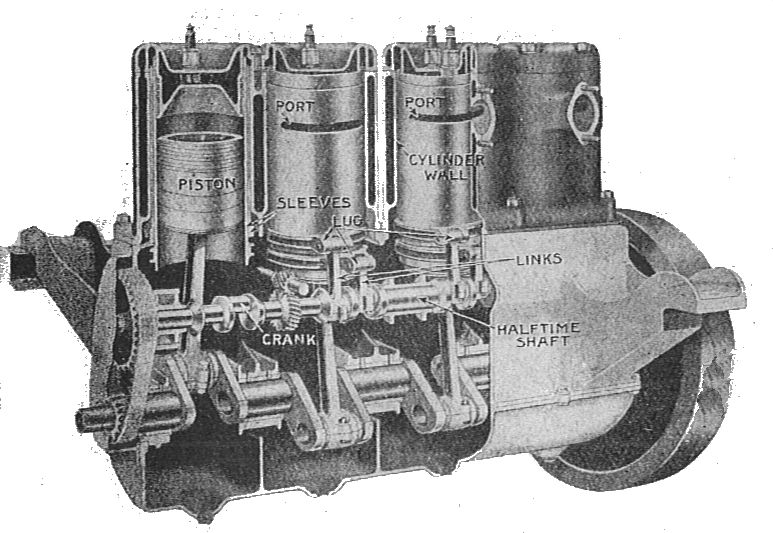Sleeve valve
Marque Registrar – Michael Barnes
0417405766 (mob)
Brief History
In 1901 Charles Yale Knight bought an air-cooled, single-cylinder three-wheeler whose noisy valves annoyed him. He believed that he could design a better engine and did so, inventing his double sleeve principle in 1904. Backed by Chicago entrepreneur L.B. Kilbourne, a number of engines were constructed followed by the “Silent Knight” touring car which was shown at the 1906 Chicago Auto Show.
Knight’s design had two cast-iron sleeves per cylinder, one sliding inside the other with the piston inside the inner sleeve. The sleeves were operated by small connected rods actuated by an eccentric shaft. They had ports cut out at their upper ends. The design was remarkably quiet, and the sleeve valves needed little attention. It was, however, more expensive to manufacture due to the precision grinding required on the sleeves’ surfaces. It also used more oil at high speeds and was harder to start in cold weather.
Although he was initially unable to sell his Knight Engine in the United States, a long sojourn in England, involving extensive further development and refinement by Daimler supervised by their consultant Dr Frederick Lanchester eventually secured Daimler and several luxury car firms as customers willing to pay his expensive premiums. He first patented the design in England in 1908. As part of the licensing agreement, “Knight” was to be included in the car’s name.
Among the companies using Knight’s technology were Avions Voisin, Daimler (1909–1930s) including their V12 Double Six, Panhard (1911–39), Mercedes (1909–24), Willys (as the Willys-Knight, plus the associated Falcon-Knight), Stearns, Mors, Peugeot, and Belgium’s Minerva company that was forced to stop its sleeve-valve line of engines as a result of the limitations imposed on them by the winners of WWII, some thirty companies in all. Itala also experimented with sleeve valves.
Upon Knight’s return to America he was able to get some firms to use his design; here his brand name was “Silent Knight” (1905–1907) — the selling point was that his engines were quieter than those with standard poppet valves. The best known of these were the F.B. Stearns Company of Cleveland, which sold a car named the Stearns-Knight, and the Willys firm which offered a car called the Willys-Knight, which was produced in far greater numbers than any other sleeve-valve car.




